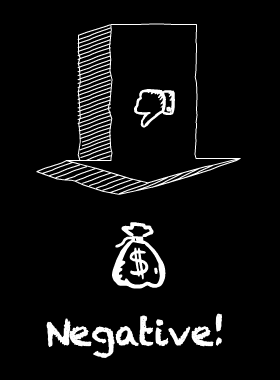Anyone cited by Warren Buffett as a super-investor is worth knowing more about. Walter Schloss is one such man.
Walter Schloss was born in 1916. He began working on Wall Street at aged 18, while the stock market was still recovering from the Great Crash.
Schloss took investing classes from Benjamin Graham, who also taught Warren Buffett. He went on to work for Graham’s fund (where he met Buffett) before setting up his own partnership in 1955.
Schloss was an excellent investor:
- His fund achieved an average compound return of 15.5% a year until he closed it in 2000.
- The S&P 500 returned 10% a year over the same period.
If you had been able to invest $10,000 in the S&P 500 in 1955, then by 2000 you’d have had:
- $729,000
Not bad – but $10,000 given to Walter Schloss in 1955 would have grown to:
- $5,388,000
Nice returns if you can get them!
How Walter Schloss managed money
Most super-successful investors must change their tactics as their funds get larger. Schloss invested for fewer than 100 clients. He was therefore able to invest in small companies and special situations throughout his career.
His investing style was pure Benjamin Graham. In Warren Buffett’s 1984 essay, The Superinvestors of Graham and Doddsville, Buffett wrote:
Walter has diversified enormously, owning well over 100 stocks currently. He knows how to identify securities that sell at considerably less than their value to a private owner. And that’s all he does. He doesn’t worry about whether it it’s January, he doesn’t worry about whether it’s Monday, he doesn’t worry about whether it’s an election year. He simply says, if a business is worth a dollar and I can buy it for 40 cents, something good may happen to me. And he does it over and over and over again.
He owns many more stocks than I do — and is far less interested in the underlying nature of the business.
I don’t seem to have very much influence on Walter. That’s one of his strengths; no one has much influence on him.
By age 80, Schloss hadn’t changed much, according to Buffett’s biography, The Snowball:
Walter Schloss still lived in a tiny apartment and picked stocks the same way he’d always done.
A few chapters on we find Schloss playing tennis at 90. That definitely qualifies him for the Great Old Investor club!
The rules of Walter Schloss
If you’d like to follow in the footsteps of Walter Schloss – to try to beat the market rather than ‘merely’ tracking it – then you’ll want to know how he invested.
As a pupil of Benjamin Graham and a fellow traveller of Warren Buffett, Schloss was obviously a value investor. Your first port of call should therefore be Ben Graham’s The Intelligent Investor.
Like all investors who do achieve the very difficult – but not impossible – and beat the market, Walter Schloss had his own quirks though.
In 1994 Schloss typed them up onto a single sheet of paper. No book, no speaking tour – just 16 bullet point guidelines.
And here they are, near-verbatim.
Factors needed to make money in the stock market: Walter Schloss
- Price is the most important factor to use in relation to value.
- Try to establish the value of the company. Remember that a share of stock represents a part of a business and is not just a piece of paper.
- Use the book value as a starting point to try and establish the value of the enterprise. Be sure that debt does not equal 100% of the equity. (Capital and surplus for the common stock).
- Have patience. Stocks don’t go up immediately.
- Don’t buy on tips or for a quick move. Let the professionals do that, if they can. Don’t sell on bad news.
- Don’t be afraid to be a loner but be sure you are correct in your judgement. You can’t be 100% certain but try to look for weaknesses in your thinking. Buy on a scale and sell on a scale up.
- Have the courage of your convictions once you have made a decision.
- Have a philosophy of investment and try to follow it. The above is a way that I’ve found successful.
- Don’t be in too much of a hurry to sell. If the stock reaches a price that you think is a fair one, then you can sell but often because a stock a goes up say 50%, people say sell it and button up your profit. Before selling try to reevaluate the company again and see where the stock sells in relation to its book value. Be aware of the level of the stock market. Are yields low and P-E ratios high? Is the stock market historically high? Are people very optimistic etc?
- When buying a stock, I find it helpful to buy near the low of the past few years. A stock may go as high as 125 and then decline to 60 and you think it attractive. Three years before the stock sold at 20 which shows there is some vulnerability to it.
- Try to buy assets at a discount [rather] than to buy earnings. Earnings can change dramatically in a short time. Usually assets change slowly. One has to know much more about a company if one buys earnings.
- Listen to suggestions from people you respect. This doesn’t mean you have to accept them. Remember it’s your money and generally it is harder to keep money than to make it. Once you lose a lot of money it is hard to make it back.
- Try not to let your emotions affect your judgement. Fear and greed are probably the worst emotions to have in connection with the purchase and sale of stocks.
- Remember the work of compounding. For example, if you can make 12% a year and reinvest the money back you will double your money in six years, taxes excluded. Remember the rule of 72. Your rate of return [divided] into 72 will tell you the number of years to double your money.
- Prefer stocks over bonds. Bonds will limit your gains and inflation will limit your purchasing power.
- Be careful of leverage. It can go against you.
Sounds straightforward, doesn’t it?
It’s not! The alchemy of super-rare successful active investing is simple but not easy.
That’s why Schloss’ rules have aged so well. I’d say rule three – to favour book value as a foundation of value – is the only one that’s (arguably) out of date.
Modern companies’ greatest strengths are often intangible assets that aren’t accurately reflected by book value. Think of today’s technology giants, for instance.
Perhaps Schloss would just ignore those. There are still plenty of companies where old-school value investing metrics are relevant. If you’re turning over thousands of stones looking for a few gems – and trading your portfolio rather than aiming to buy and hold the next Microsoft – then valuing hyper-growth tech firms is someone else’s problem.
According to Smart Money, Walter Schloss was still running his own portfolio as of April 2009, aged 95. Schloss passed away on 19 February 2012.




